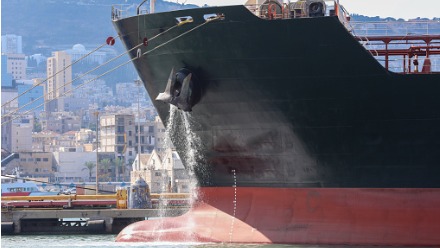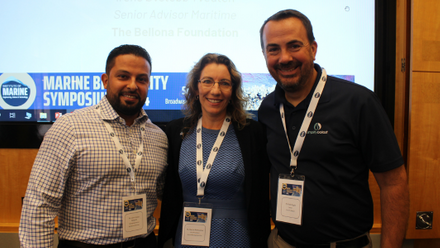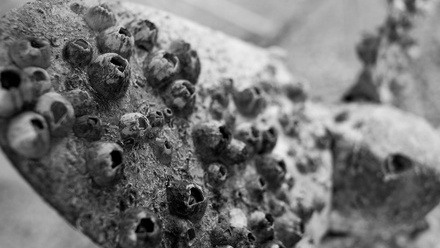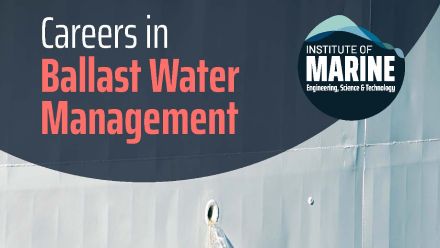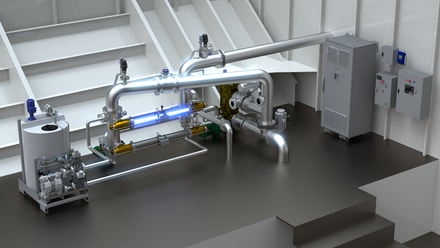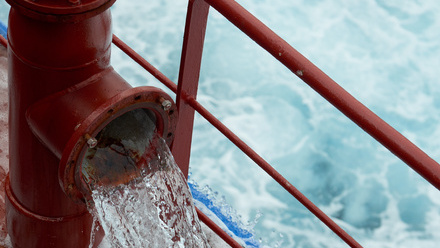Why the ballast water bottleneck is back
The dash to meet IMO standards for ballast water systems is being disrupted by COVID-19. With shipyards not yet ready for the deadline, is the worst yet to come for some?
Years before the Ballast Water Management Convention was due to enter force, manufacturers warned of a ‘bottleneck’ – a deluge of systems needing to be fitted before the 23 October deadline and shipyards without space to accommodate them.
In response, the IMO staggered its timeline of installations, believing it would ameliorate the issue. Unfortunately, COVID-19 has thrown a spanner in the works, closing many yards, preventing some system installations, and delaying many others.
Put simply, the bottleneck has returned. Ashok Srinivasan, BIMCO Manager, Maritime Safety and Security, warned in a recent editorial, that “...as soon as the situation improves, there will be a high demand for drydocking facilities, with the inevitable increase in price.”
Compounding the issue: “Although BWMS manufacturers are working hard to get the latest type-approval for their systems... most testing facilities are facing delays and disruptions... although there will be a few more BWMS available for installation by 28 October 2020, it is highly unlikely that all systems will have been approved by this deadline.”
Problems on the ground are clear to see. Naval architect Glosten is advising its employees to avoid public transport, hotels and air travel. “Air travel is of concern as it is impractical to maintain a six-foot distance from other people,” its COVID-19 guidance document says.
The virus has greatly reduced the number of circumstances surveyors can go onto ships, and surveyors are advised to wear PPE, “use remote communication techniques, such as phone or VHF, while on board” and “avoid vital areas of the vessel, such as the bridge and engine control room, as practical.”
At Glosten, business is going very well, it says, because it has adapted quickly to COVID-19 impacts, with perhaps the biggest impact of COVID-19 on the ballast refit sector.
“Our firm is working on many ballast water projects, and COVID-19 forced us to make immediate and significant changes to keep these on track,” says Kevin Reynolds, head of research and development at Glosten.
Reynolds adds that his company is having to perform retrofits “without laser scanning guidance” thanks to cancellation of vessel inspections; and to partner with local Chinese firms to perform on-site work, because “[we are] unable to send US-based service engineers to China, Philippines, and other needed locations; and [we have] a loss of access to materials from India meant to shift to China due to lockdowns.”
Marcie Merksamer, Chair of IMarEST’s ballast water management special interest group (SIG) and VP of EnviroManagement, Inc., tells Marine Professional: “[EnviroManagement] offers compliance monitoring services to vessel owners, such as ballast water and gas scrubber testing. During the early part of COVID-19 (mid-March through April) we experienced significantly reduced capabilities to provide shipowners with the services they needed for regulatory requirements due to global travel restrictions, port and vessel access limitations, as well as reduced analytical laboratory services.
“In some cases, we are aware owners were unable to meet their IMO BWMS commissioning testing requirements and needed short-term extensions.”
Locked down and locked-up
At the time of writing (1 July) only 15 systems have the G8 certification. One of them is Hyde Marine’s Guardian BWTS.
Mark Riggio is President of the Ballastwater Equipment Manufacturers' Association (BEMA) and Senior Market Manager for Hyde Marine.
“We were fortunate that we completed the last of our shipboard tests in October. As much as I might have wanted to test, COVID-19 has completely shut down the facilities,” says Riggio.
Others haven’t been so lucky. “There are many companies trying to get G8 certification, but are unlikely to have it by October,” Riggio continues. “It will absolutely artificially restrict market access for individual competitors.”
The additional level of market distortion presented by COVID-19 is a sorely unwanted development for many manufacturers, which are already selling systems at cost-price to secure market share.
“From a business analysis perspective, the market really has been in a state of pure competition. We’re fortunate that we’re a manufacturer, meaning we build our UV chambers, all our panels and we are bringing in raw materials. We do purchase a couple of components from Europe and we have had some initial delays, but we manage that using heavy inventories.
“One of the keys in this marketplace has always been low cost. The second factor is the immediacy of need. When a ship needs a system, they don’t have eight weeks to wait for it. We’ve always placed a high emphasis on the shortest lead times in the industry. Our stated lead time runs at about 8 weeks, but we’ve turned products around in a month. You can’t do that with a just in time (JIT) supply chain.
“I can tell you that I’ve been surprised at how little interaction we’ve had with shipowners since the virus set in, but we’ve had an order intake. We have around 500 systems fitted.”
With many shipyards closed, getting surveyors onto vessels is difficult, and ships will have to divert longer distances and incur longer periods of off-hire time in order to do so. Since most owners perform retrofits and other tasks during these junctures, other crucial operations suffer.
“There are many companies trying to get G8 certification, but are unlikely to have it by October,” Mark Riggio, Hyde Marine
“We have seen delays in decision-taking for new orders, which changed a lot after March-April,” explains Tore Andersen, EVP Sales and Marketing for ballast water system manufacturer Optimarin. “Shipowners are in home offices, struggling to get business done. You can do a lot of things round the edges on Zoom or what have you, but 3D-scanning on board ships is not possible. That kind of thing is slowing down the process. Without the scanning we cannot get the drawings, so retrofit slows down as well.”
But the most pronounced market distortion from COVID-19 is yet to come. Optimarin Ballast System (OBS) treats seawater uptake with UV to kill organisms. The company is on the verge of securing improved G8 certification, having completed all the relevant tests; but it has not, at time of writing, secured it.
“Last week we finalised our G8 testing... [but] a lot of paperwork still has to be done before we get the certificate,” Andersen explains.
As Optimarin’s situation shows however, in performance terms, any distinction between these systems and many of those without a certificate may prove arbitrary.
US Coast Guard testing standards – which have been met by some 30 systems already – are very similar to those of IMO. “If you have a robust system, it should manage to get the revised G8. I would say that all systems that have met the US Coast Guard standard should be able to meet with the revised G8 guidelines. There is, however, a long queue of systems still to be tested.”
A building ballast backlog
For Optimarin, securing the materials and components to assemble systems does not appear to be an issue; but shipyard access is presenting a major hassle, with survey bookings cancelled, and completed systems piling up.
Shipyards “not ready”
“Luckily, [the virus] has not had any impact on our supply or logistics, but the challenge is that we are stacking up systems ready for shipment, because the yards are not ready to install them,” says Andersen. “We are facing a date when we have the system ready and the shipowner cannot take it.
“At this point, we are back to operating at nearly 100% capacity in roughly 100 global ports where we can provide our services,” Merksamer indicates. “Like many others, we are operating with modified or additional procedures as needed to prevent spread of COVID-19, which currently do not present any significant challenges.
“Manufacturers experienced difficulties related to travel restrictions for service technicians, temporary delays in shipment of treatment system components and materials, and shipyard access challenges.
“However, we are not aware of any situations where treatment system installations were not completed or were cancelled as a direct result of COVID-19. All installations for manufacturers we support were either completed on time, or with short-term delays.
“Manufacturers are currently seeing a reduction in inquiries and delays in owners proceeding with finalising treatment system purchase agreements, as the USCG has issued a policy to delay ballast water compliance dates by 12 months – and owners may be anticipating that the IMO may do something similar.”

Charlie Bartlett is a maritime journalist.

